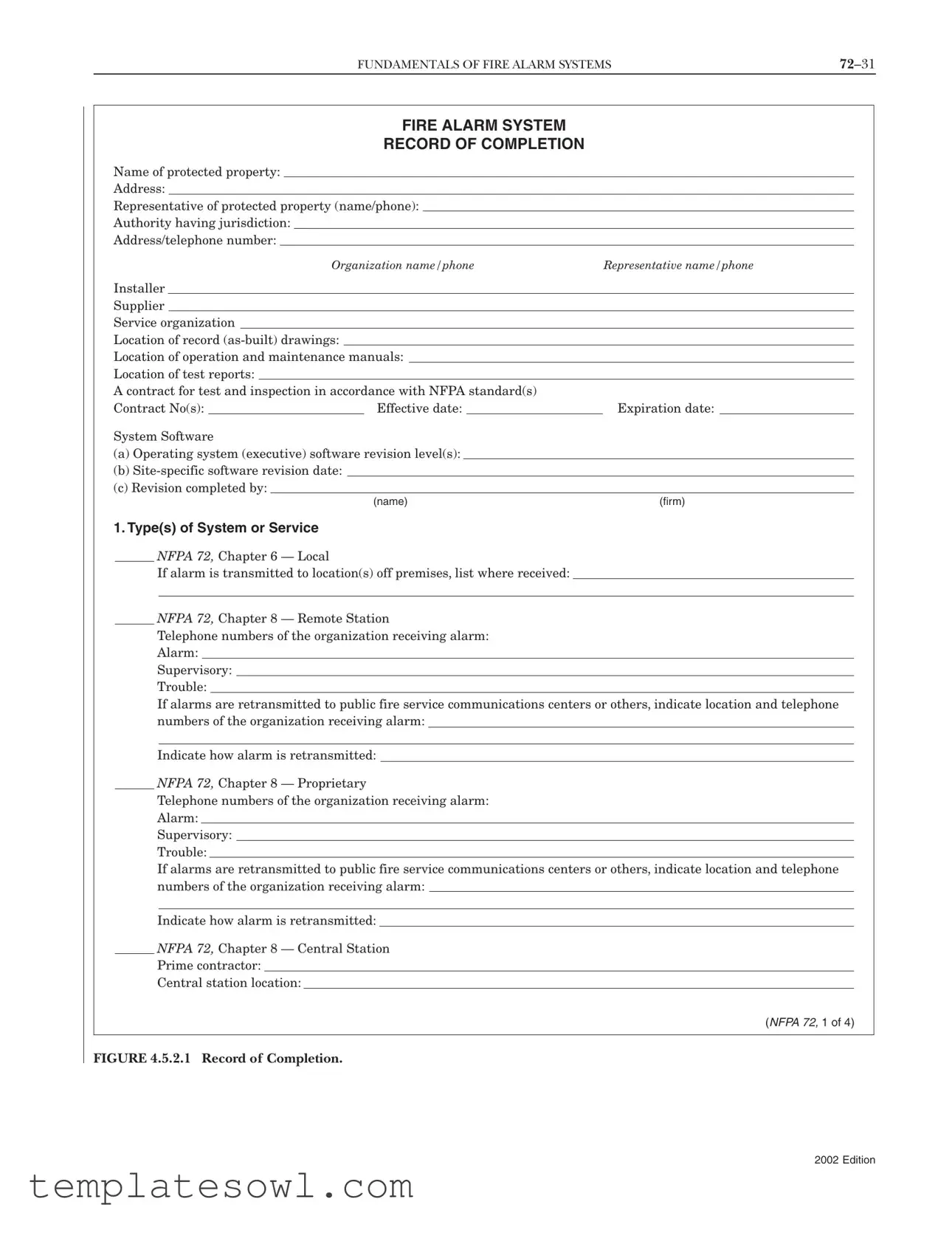What is the purpose of the NFPA Completion Record form?
The NFPA Completion Record form serves as an official record that documents the installation and operational aspects of fire alarm systems. It ensures compliance with National Fire Protection Association (NFPA) standards and provides essential information about the fire alarm system functioning and service protocols for the protected property.
What information is required regarding the protected property?
The form requires detailed information about the property being protected. This includes the name and address of the property, the representative’s name and phone number, as well as the contact details of the authority having jurisdiction. This data helps ensure that all necessary parties are informed and accountable.
How do I document system installation?
After completing the installation of the fire alarm system, the technician must fill out the section regarding system installation. This includes indicating compliance with applicable NFPA standards, noting who performed the inspection, and specifying the devices included in the installation. It’s crucial to document this before conducting any operational acceptance tests to confirm that everything is in order.
What operational tests need to be conducted?
The form includes a section about system operation documentation, where all operational features and functions must be tested. This testing verifies that the system operates as intended and complies with the relevant NFPA chapters. The individual conducting the test should sign and date this section, confirming that all operational requirements have been met.
Can you explain the significance of signaling line circuits?
Signaling line circuits are vital for the communication between activation devices and the control panel of the fire alarm system. The completion record prompts the user to specify the quantity, style, and class of these circuits, ensuring that they meet NFPA requirements. This information contributes to the reliability and safety of the fire alarm system.
What types of alarm-initiating devices should be documented?
The record requires documentation of the various alarm-initiating devices connected to the system. This includes manual stations, smoke detectors, and heat detectors, among others. Accurately recording the quantity and types of these devices is important for maintaining safety protocols and simplifies inspections and audits in the future.
How is the system power supply addressed in the form?
The NFPA Completion Record form includes details on the primary power supply and any backup options. This section involves noting the type, location, and specifications of the fire alarm control panel, secondary power sources, and any emergency power systems. A consistent power supply is fundamental to ensuring that the fire alarm system remains functional during emergencies.
What should I include in the comments section?
The comments section is a space for noting any deviations from NFPA Standards and specifying the frequency of routine tests and inspections if it differs from established protocols. This area allows for transparency and gives valuable context about the system’s maintenance schedule, ensuring future inspectors have clear information.
Who needs to sign the NFPA Completion Record?
The NFPA Completion Record must be signed by several parties involved in the fire alarm system's installation and maintenance. This includes representatives from the installation contractor, service company, and central station. Additionally, a representative from the authority having jurisdiction may also need to sign off after witnessing satisfactory testing. These signatures confirm accountability and adherence to the outlined processes.




